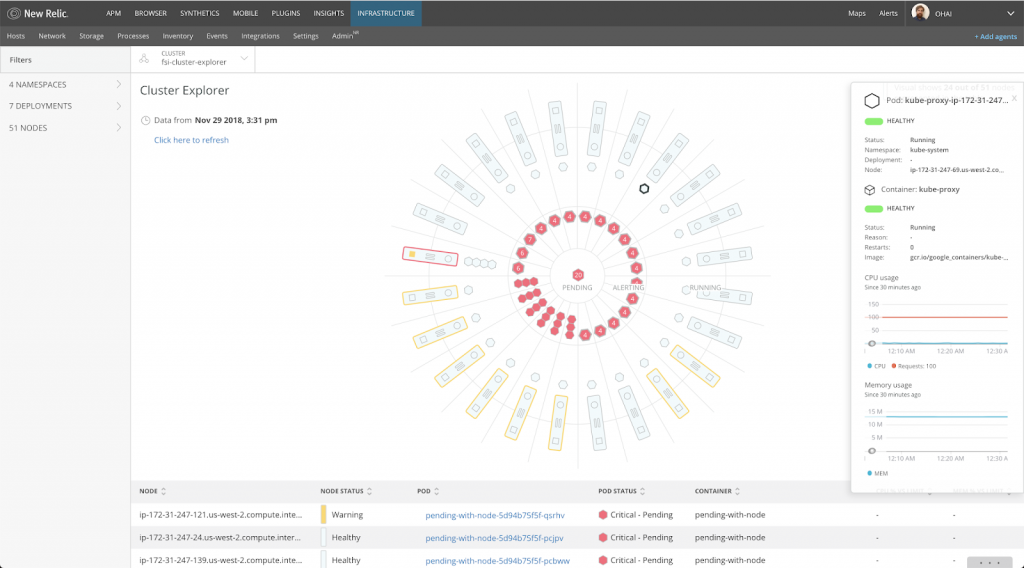New Relic Adds Ability to Explore Kubernetes Clusters
As the management of applications and infrastructure continues to converge, DevOps teams need a more holistic approach to managing IT. To provide that capability in the age of microservices, New Relic has added the ability to see what’s occurring within a Kubernetes cluster to its application monitoring tools.
Patrick Lightbody, senior vice president for product management at New Relic, says a cluster explorer capability added to its software as a service (SaaS) offering now makes it possible to drill down into application and infrastructure metrics side by side to more easily identify dependencies and resolve issues. DevOps teams now can employ New Relic to inspect a single container or an entire Kubernetes cluster via a single user interface, he says, adding New Relic is already being employed to inspect more than 80 million containers per month.
Based on agent software deployed in a container environment as well as technology New Relic gained last year by acquiring assets from CoScale, the service can be employed across multiple instances of Kubernetes running in the cloud or in an on-premises environment, Lightbody says.
In general, Lightbody notes, microservices based on containers are more complex to manage than traditional monolithic applications. New Relic is now making it easier for DevOps teams to connect metrics generated by infrastructure such as Kubernetes with specific application workloads. There’s obviously no shortage of tools for monitoring Kubernetes clusters, but New Relic is making it possible to monitor Kubernetes alongside the applications deployed on top it. In fact, many IT organizations when they first use the new capabilities added to the New Relic service are surprised to discover all the dependencies that exist within their applications, he says.
Less clear is to what degree containers and Kubernetes will drive more organizations to embrace DevOps processes. Kubernetes doesn’t necessarily require organizations to transform how they manage IT. But as the number of microservices based on containers increases, there is a greater need to converge application and IT infrastructure management. Kubernetes arguably creates for the first time a common construct that both developers and IT operations management teams can comprehend. That convergence may enable IT organizations to enjoy higher levels of efficiency by converging the management of applications and Kubernetes clusters under a single team. But other organizations may view Kubernetes as an opportunity to establish better-defined separations of concerns between application developers and IT operations teams.
Regardless of the path chosen, the fact that both application developers and IT operations teams might be basing decisions on the same core metrics might prove to invaluable. It’s not that developers are unsympathetic to the challenge IT operations teams face. It’s just that finding a means for IT operations teams to convey those challenges in a way that developers can appreciate historically has proven elusive. As it becomes easier to share dashboards showing precisely what’s occurring in any IT environment, resolving IT operational issues should become less painful for all concerned.





